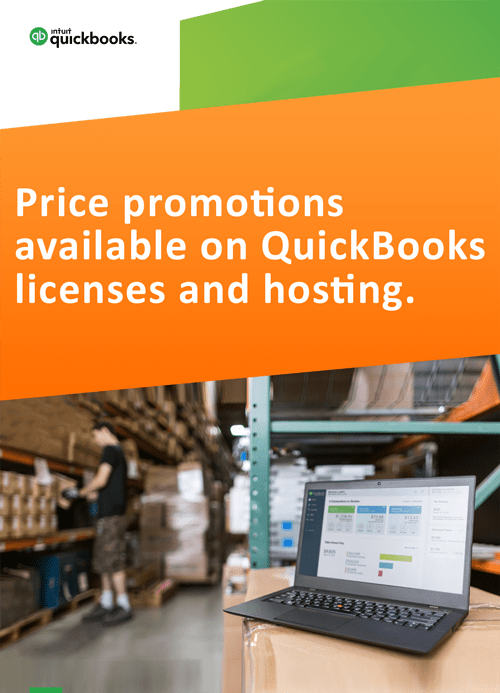Expensify QuickBooks Integration – A Winning Combo for Accountants
QuickBooks Desktop is one of the most comprehensive accounting software that should be able to meet the accounting requirements of most businesses. However, it is impractical to provide all the features that millions of users require. Consequently, QuickBooks provides integration capabilities for third-party applications that could bridge the requirement gaps. One such popular application that integrates with QuickBooks is Expensify.
It is one of the best applications to automate expense reports and directly submit them for approval in QuickBooks. It helps businesses save time and money in manual work while increasing accuracy and reducing fraud risk. This is a comprehensive write-up on how to use Expensify with QuickBooks.
How is Expensify Different from QuickBooks?
Because of the similarity in the nature of the tasks that are performed on QuickBooks and Expensify, there is invariably a QuickBooks vs Expensify comparison. While the two software shares several functionalities, they are still as different as chalk and cheese. While QuickBooks is a comprehensive accounting and business management software, Expensify is built around one accounting aspect, which is expense management, and has auxiliary functions that complement it.
What Are the Key Features of Expensify?
Expensify automates and simplifies the expense management process to a large extent. It offers a range of features that helps businesses implement an efficient system that minimizes manual efforts in handling expenses.
Innovative receipt scanning
Expensify transcribes photos of receipts and stores the values for retrieval at a later stage. There are no restrictions on the number of such scans.
Imports credit card data
Expensify can automatically merge and code data that it imports from personal and business transactions.
Expense reconciliation
Users can review unsubmitted expenses and confirm the spending all in one place in the reconciliation dashboard that works in real-time.
Integrated reimbursement management
Businesses can approve and transfer reimbursement within a day. This is with the help of a feature that automatically distinguishes the expenses that require a manager’s review from the ones that don’t.
Workflows and customizations
Expensify gives businesses flexibility in framing rules that are specific to their requirements. They can even create workflows for automating processes and provide detailed information on employee spending. Information can be collated and distributed with customized reports that can be used both within and outside the app.
Expensify also includes advanced security features, tax management capabilities, along with tracking and coding features.
How Does Expensify Work with QuickBooks?
Expensify provides real-time expense reporting in QuickBooks. This minimizes the entries that accountants or employees have to make as the process to export expenses is automated to a large extent. Here are some ways that Expensify and QuickBooks work seamlessly to help businesses go paperless in managing finances.
Realtime synchronization
The data flow from Expensify to QuickBooks is so seamless that businesses see all the information, from new accounts in QuickBooks to expense reports in Expensify, all in real-time.
Codability of preferences
Businesses can customize how details such as expenses, customers or jobs, classes, locations, and other aspects appear in QuickBooks when data is exported from Expensify.
How to Use Expensify with QuickBooks?
Integrating Expensify with QuickBooks is a fairly simple process. Here’s a cheat sheet on how to go about the process of integrating Expensify with QuickBooks Desktop.
- Login to QuickBooks Desktop as an admin and ensure that you have only one open company file.
- Set all report submitters as Vendors in QuickBooks while mapping the email used in Expensify to the “Mail Email” field in the Vendor record.
- Select QuickBooks Desktop in the Connections option in the Settings menu in Expensify.
- Download Expensify Sync Manager and launch it on the server or desktop which is running the QuickBooks Application.
- Establish a connection between Expensify and QuickBooks and paste the User Token from QuickBooks Desktop Setup in the Expensify Sync Manager.
- Click on “Continue” when the status on the Sync Manager turns to “Connected”.
- Select the “Yes, always; allow access even if QuickBooks is not running.” option on the Application Certificate on QuickBooks.
- Choose the admin user and finish the setup.
Expensify allows connecting multiple companies or policies with a single account. The existing connection can be re-used for each policy.
So…Does Expensify Integrate with QuickBooks Desktop Easily?
It is possible to integrate Expensify with QuickBooks Desktop running on a shared company drive, a single user/ personal desktop, or a third-party remote desktop. The steps for integration will be slightly different in each case. The best option would be to run QuickBooks on a third-party remote desktop as it allows remote access for Expensify and QuickBooks making it convenient for accountants and admins to manage workflows with greater efficiency.
As an Intuit Authorized Host, Apps4Rent provides the best infrastructure for seamlessly operating Expensify and QuickBooks. Our experts provide technical assistance 24/7 support via phone, chat, and email.
If you face any difficulty in integrating Expensify with QuickBooks on a Cloud Desktop, contact our experts now. We can help QuickBooks integration with a third-party application on a Cloud Desktop seamlessly.


